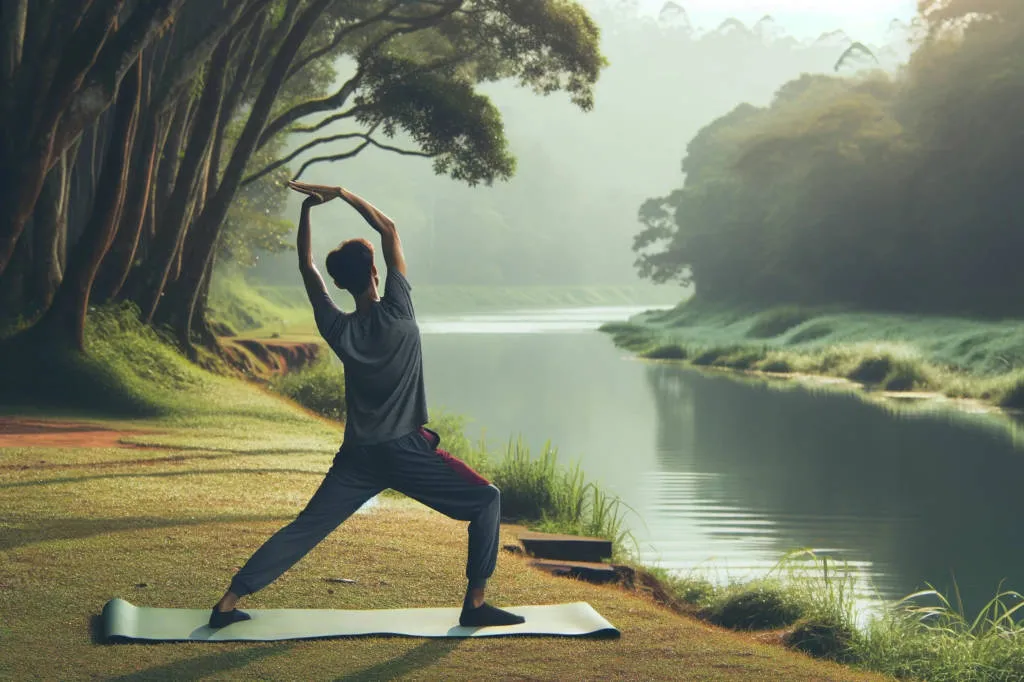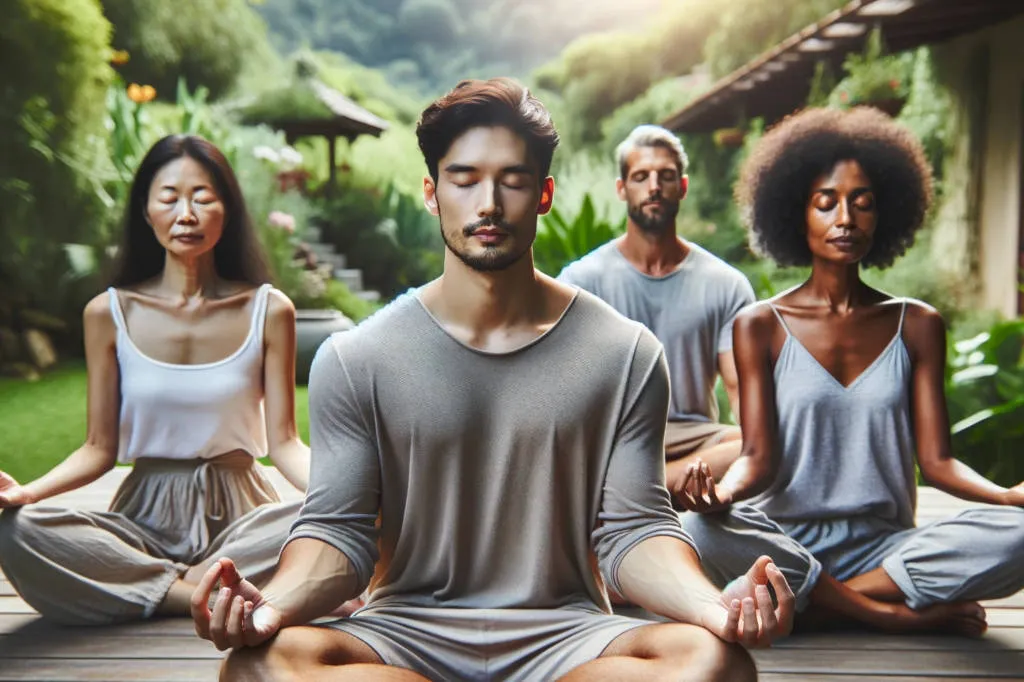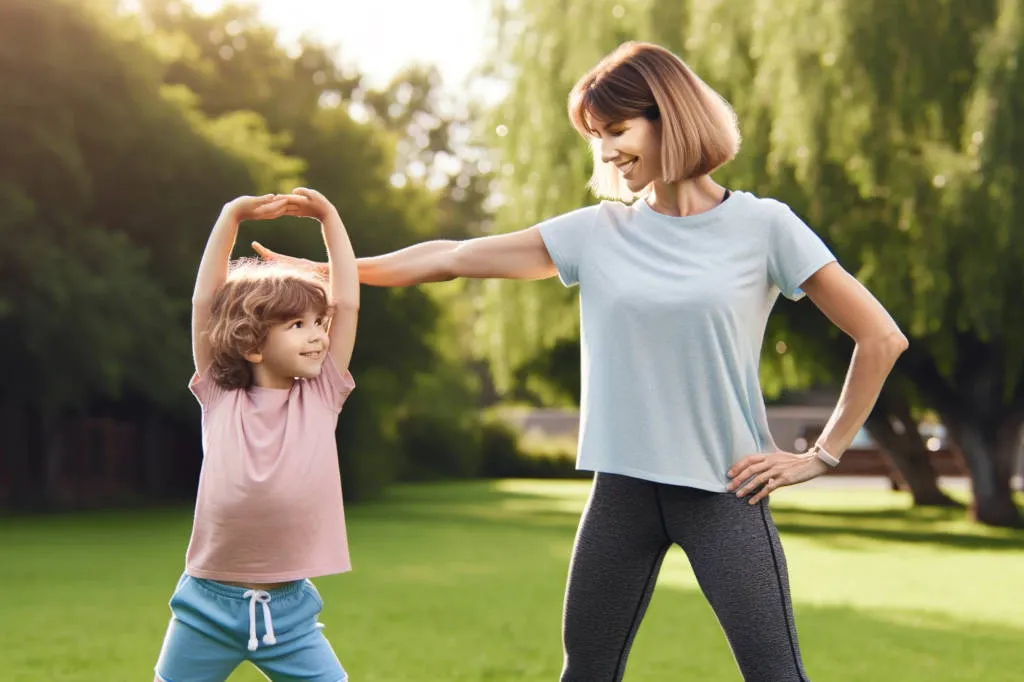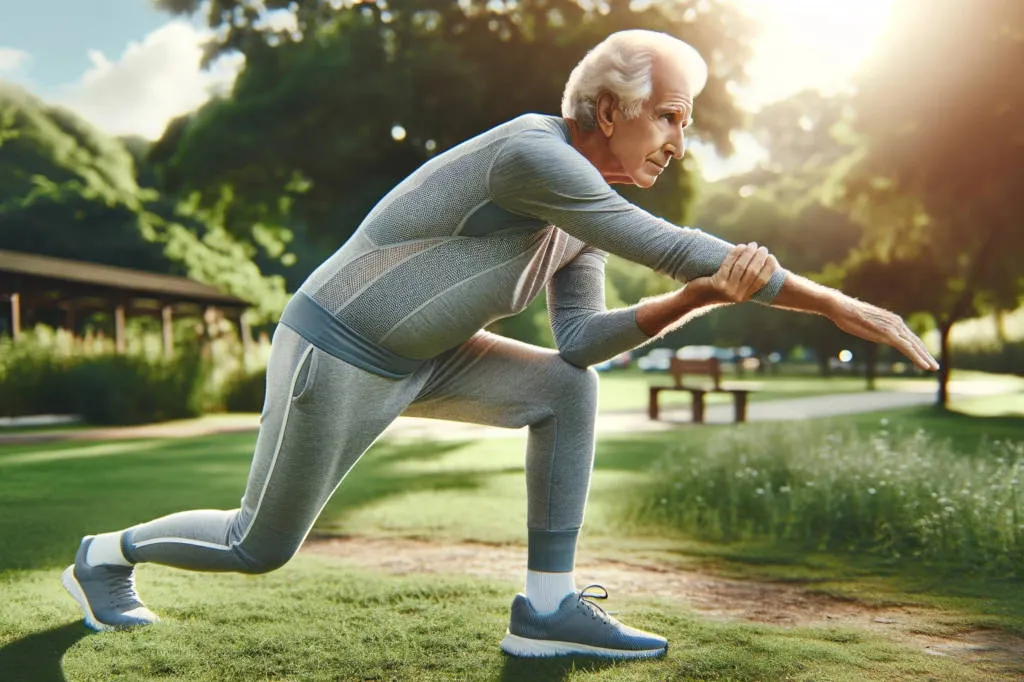“Why does stretching feel good?” It’s a question many of us have pondered during that satisfying morning stretch or while unwinding after a long day. The sensation of stretching isn’t just pleasurable—it’s deeply intertwined with our biology, psychology, and overall well-being. In this blog post, we’ll delve into the science and benefits behind stretching, shedding light on why this simple act can feel so rejuvenating and essential for our bodies. Whether you’re a fitness enthusiast or someone seeking relaxation techniques, understanding the magic of stretching will elevate your appreciation for this natural gesture. Join us as we unravel the mysteries behind the blissful feeling of a good stretch.
Table of Contents
The Science Behind Stretching
Why does stretching feel good? This question might seem simple, but the answer takes us on a fascinating journey into the intricate workings of our muscles, nerves, and brain.
1. Muscle Mechanics:
At the very basic level, when we stretch, we elongate our muscle fibers. This action helps increase the blood flow to these muscles, enhancing oxygen supply and helping in the removal of waste products. The increased circulation often results in a warming sensation, which can feel soothing and comforting.
2. Release of Endorphins:
Stretching, like other physical activities, leads to the release of endorphins. These are chemicals produced by the body that act as natural painkillers and mood elevators. They are often responsible for the “feel good” sensation we experience after activities like exercise, and yes, stretching!
3. The Golgi Tendon Reflex:
Embedded within our muscles and tendons are specialized nerve endings called Golgi tendon organs (GTOs). When we stretch, these GTOs send signals to the brain, which then instructs the muscles to relax. This natural reflex mechanism prevents injury and is partly why we feel a sense of relief after stretching a tight muscle.
4. Myofascial Release:
The myofascia is a dense, tough tissue that surrounds and covers all our muscles and bones. Over time, due to factors like inactivity, stress, or injury, this tissue can become stiff. Stretching can help in releasing myofascial tightness, giving a sensation of “unwinding” or freeing up the muscle.
5. Mental Relaxation:
The act of stretching isn’t just beneficial for the body; it’s a boon for our minds as well. When we stretch, we also focus on our breathing, which can be meditative and calming. This momentary pause and focus can serve as a mental “reset,” reducing stress and enhancing our overall sense of well-being.
In conclusion, the question of why stretching feels good is answered by a combination of improved circulation, chemical releases in the brain, reflex actions, tissue releases, and mental relaxation. It’s a harmonious dance of physiological and psychological responses, reminding us of the intricate and amazing nature of our bodies.
Why Does Stretching Feel Good?
One of the primary reasons why stretching feels good is closely related to the body’s natural response in releasing endorphins. But what exactly are endorphins, and how do they relate to stretching? Let’s delve deeper.

1. What are Endorphins?
Endorphins are a group of hormones produced within the brain and nervous system. They are often dubbed as the body’s “natural painkillers” because they act on opiate receptors in our brain to reduce pain and boost pleasure, leading to feelings of euphoria.
2. Stretching and Endorphin Production:
Why it feels good from an endorphin perspective? When we stretch, especially if the stretch is intense or held for a prolonged period, our body may perceive it as a mild form of stress. In response, endorphins are produced to counteract this discomfort, leading to a subsequent sensation of relaxation and positivity.
3. Beyond Pain Relief:
While endorphins are great for countering pain, their benefits don’t just stop there. They are also associated with feelings of happiness and euphoria. This is why activities that release endorphins, like exercise, laughter, and of course, stretching, are often recommended as natural mood boosters.
4. Enhancing the Effect:
Breathing deeply and maintaining a consistent rhythm during stretching can amplify endorphin release. This combination of stretching with mindful breathing often results in a more pronounced feeling of calm and well-being.
5. A Natural Stress-Reducer:
Endorphins have the added benefit of reducing the level of stress hormones in the body. So, when you engage in stretching, especially in a stressful environment or situation, you’re not just improving flexibility but also actively promoting mental relaxation.
In wrapping up, the release of endorphins during stretching contributes significantly to the pleasurable sensations we experience. Whether you’re stretching to warm up for an exercise, taking a short break from work, or winding down before bed, remember that with each stretch, you’re inviting a wave of feel-good hormones to elevate your mood and brighten your day.
Increased Blood Flow and Oxygenation
Have you ever wondered why a good stretch seems to invigorate your entire body, offering a refreshing burst of energy? The answer lies, in large part, in the enhanced blood flow and oxygenation that occurs during and after stretching. Let’s dive into the mechanics of this process and understand why stretching feels so revitalizing.

1. The Mechanism of Stretching:
When we stretch our muscles, we’re essentially elongating the muscle fibers and surrounding connective tissues. This action momentarily compresses the blood vessels within the muscle.
2. The Rebound Effect:
Upon releasing the stretch, there’s a rapid “rebound” or dilation of these compressed blood vessels, leading to an increased volume of blood rushing into the area.
3. Oxygen – The Vital Ingredient:
Blood is the primary carrier of oxygen, which is essential for cellular function. As blood flow increases due to stretching, there’s also an uptick in the delivery of oxygen to the muscle cells and surrounding tissues.
4. Benefits of Enhanced Oxygenation:
Oxygen plays a pivotal role in producing energy within our cells. As more oxygen reaches our muscle cells post-stretch, there’s a surge in energy production. This is one of the reasons we often feel more awake and alert after a good stretch.
5. Flushing Out Toxins:
Increased blood flow also aids in flushing out metabolic waste products from muscle cells, effectively “cleaning” the area. This removal of waste contributes to the refreshed feeling we experience.
6. Nutrient Delivery:
Alongside oxygen, blood carries essential nutrients that muscles need for repair and growth. Post-stretching, the enhanced blood flow ensures that these nutrients are effectively delivered to the muscles, promoting overall health and recovery.
7. Enhanced Brain Function:
While we often associate stretching with muscles, it’s worth noting that increased blood flow and oxygenation benefit the brain too. This influx of oxygen-rich blood can sharpen focus, clarity, and cognitive function, contributing to the invigorated feeling post-stretch.
In summary, the act of stretching does more than just lengthen muscle fibers—it plays a crucial role in rejuvenating our body and mind through enhanced blood flow and oxygenation. So, the next time you ask that question, remember the vital role of blood and oxygen in invigorating your entire system.
Relief from Muscle Stiffness
Muscle stiffness can be a real pain, both literally and figuratively. Whether it’s due to a strenuous workout, long hours at a desk, or simply the natural aging process, most of us have experienced that unpleasant tightness in our muscles. But why does stretching feel good, especially when it comes to alleviating this discomfort? Let’s delve into the dynamics of muscle stiffness and the role stretching plays in offering relief.

1. Understanding Muscle Stiffness:
Muscle stiffness is primarily a result of muscle fiber contractions that don’t fully release, leading to a sensation of tightness. Other contributors can include the buildup of lactic acid or minor muscle injuries.
2. The Magic of Elongation:
Stretching gently elongates muscle fibers, counteracting the contraction that leads to stiffness. This process helps to restore the muscle to its natural state, resulting in a sensation of relief and relaxation.
3. Breaking Down Adhesions:
Sometimes, due to muscle injuries or chronic inactivity, adhesions (tiny scar tissues) can form between muscle fibers. Stretching can assist in breaking these down, which in turn offers relief from the associated stiffness and discomfort.
4. Improving Joint Mobility:
Muscle stiffness can affect joint mobility. By stretching the surrounding muscles, there’s often an improvement in the range of motion of the associated joints, leading to greater overall mobility.
5. Reducing Inflammation:
Stretching can stimulate blood flow and, as previously mentioned, aid in flushing out toxins. This increased circulation can also help reduce inflammation around stiff muscles, contributing to the sensation of relief.
6. Psychological Aspects:
It’s not just physical! The act of stretching, especially when done mindfully, can be a form of stress relief. As you focus on your body and the act of stretching, it can divert attention from sources of stress or discomfort, leading to a sensation of mental as well as physical relaxation.
7. Restoring Balance:
Muscles work in pairs, and when one muscle group becomes stiff, it can throw off the balance, leading to poor posture or uneven strain. Stretching helps to balance out these muscle groups, ensuring that one isn’t overcompensating for the other.
In conclusion, especially in the context of muscle stiffness, it’s clear that the benefits are manifold. From the direct physical relief of elongating tight fibers to the holistic advantages of increased circulation and mental relaxation, stretching is a simple yet profoundly effective tool in our wellness arsenal.
Joint and Tendon Benefits
Many understand that stretching can offer muscle relief, but the advantages extend beyond just the muscular system. In fact, the joints and tendons, crucial components of our musculoskeletal system, significantly benefit from regular stretching. So, when addressing the question, it’s essential to consider these components as well. Here’s how stretching positively impacts our joints and tendons:

1. Lubricating the Joints:
Each time you stretch, the movement promotes the production and distribution of synovial fluid. This fluid acts as a lubricant for your joints, reducing friction and making movement smoother and less painful.
2. Increased Tendon Flexibility:
Tendons, which connect muscles to bones, also become more flexible with regular stretching. Enhanced tendon flexibility can lead to better force transmission from the muscle to the bone, improving overall movement efficiency.
3. Prevention of Tendon Shortening:
Lack of movement or prolonged periods in a fixed position can lead to tendons shortening over time. Stretching counteracts this by maintaining or increasing the length of tendons, which can aid in preventing various musculoskeletal problems.
4. Enhanced Joint Range of Motion:
By stretching the muscles and tendons surrounding a joint, you can increase the joint’s range of motion. This improvement not only makes daily activities easier but also can enhance athletic performance.
5. Reducing the Risk of Injury:
Flexible tendons are less prone to injuries. When a tendon can stretch further before tearing, it can absorb more force during sudden or unexpected movements, acting as a protective mechanism against potential injuries.
6. Promoting Nutrient Delivery:
Stretching boosts circulation, ensuring that joints and tendons receive an ample supply of nutrients essential for repair and maintenance. This increased blood flow aids in speeding up recovery post-activity and can help prolong joint and tendon health.
7. Mitigating Degenerative Joint Issues:
Regular stretching can reduce the risk of degenerative joint disorders, such as osteoarthritis, by keeping joints lubricated and promoting overall joint health.
In conclusion, it’s evident that the sensations go deeper than the surface. The profound benefits to joints and tendons ensure that our bodies remain agile, resilient, and less prone to injuries, further emphasizing the importance of incorporating stretching into our daily routines.
Improved Posture and Alignment
Have you ever noticed that after a good stretch, you feel not just relaxed but also taller and more aligned? The reason is not purely psychological. Stretching has a tangible impact on our posture and body alignment. Delving into the topic, we should shed light on its vital role in posture enhancement and body realignment.

1. Counteracting the Effects of Prolonged Sitting:
For many, modern life often involves hours seated at a desk or in front of screens. Such prolonged sitting can lead to forward head posture, rounded shoulders, and a slouched spine. Stretching, especially targeting the chest, shoulders, and hip flexors, can alleviate these posture deviations.
2. Strengthening Postural Muscles:
While stretching elongates tight muscles, it can also help activate and strengthen muscles vital for proper posture, such as the muscles of the upper back and core. Engaging these muscles through stretching encourages a more upright and aligned stance.
3. Reducing Muscular Imbalances:
Misalignments often arise from muscular imbalances where one set of muscles is tighter or stronger than its opposing set. Stretching can help balance muscle length and strength on both sides of the body.
4. Enhancing Spinal Health:
The spine is our central support structure. Stretching not only relieves spinal compression but also promotes a neutral spine. By maintaining a balanced and aligned spine, we can significantly improve our overall posture.
5. Facilitating Body Awareness:
Stretching heightens our body awareness, often referred to as proprioception. As we become more in tune with our bodies and how they move, we are more likely to notice and correct poor postural habits.
6. Boosting Confidence and Mood:
Standing tall doesn’t just benefit our physical health; it also influences our confidence and mood. An improved posture portrays confidence, and physiologically, an upright stance allows for better breathing and increased energy.
To sum up, the role stretching plays in enhancing posture and alignment is undeniable. When we reflect on the query, it’s clear that the feelings of wellbeing and alignment aren’t fleeting sensations. They are grounded in the biomechanical and psychological benefits we gain from consistently practicing this essential activity.
Stress Reduction and Relaxation
It’s common knowledge that a good stretch can offer immense relief, especially after a taxing day. However, the question remains: Why does stretching feel good, particularly in terms of stress relief and relaxation? Let’s explore the underlying reasons that contribute to the tranquility and calmness associated with stretching.

1. Mind-Body Connection:
When we stretch, we inherently tune into our bodies, focusing on the sensations that arise. This act of mindfulness diverts our attention from the chaotic external world, grounding us in the present moment.
2. Reduction in Muscle Tension:
Stress often manifests physically as muscle tension, especially in areas like the neck, shoulders, and back. Stretching targets these tense areas, helping muscles relax and release stored tension.
3. Activation of the Parasympathetic Nervous System:
The act of stretching, especially when combined with deep breathing, can stimulate the parasympathetic nervous system—often termed the “rest and digest” system. This counteracts the “fight or flight” response of the sympathetic nervous system, promoting relaxation.
4. Release of Endorphins:
As mentioned in the earlier sections, stretching can lead to the release of endorphins, the body’s natural painkillers and mood elevators. This not only alleviates physical discomfort but also enhances our mood.
5. Improved Blood Circulation:
Stretching boosts blood flow, ensuring that oxygen and nutrients reach various parts of the body more efficiently. This enhanced circulation can result in an elevated mood and a sense of rejuvenation.
6. Mindfulness and Meditation:
For many, stretching routines like yoga are forms of moving meditation. The focused attention on breath and movement can have a meditative effect, centering the mind and reducing anxiety.
7. Enhanced Sleep Quality:
Relaxing the body through stretching can prepare it for a restful night’s sleep. With improved sleep, the body and mind can recuperate more effectively, further reducing stress levels.
In conclusion, stretching isn’t just a physical activity; it’s a holistic practice that intertwines the mind, body, and soul. So, when someone wonders, the multifaceted benefits of stress reduction and relaxation play a significant role in that feel-good factor.
The Pleasure of Muscle Lengthening
Muscle lengthening, commonly associated with stretching, often evokes a sense of pleasure and relief. But have you ever stopped to ponder, why does stretching feel so good, particularly when it involves the elongation of our muscles?” Let’s delve into the intrinsic connection between muscle lengthening and the pleasurable sensations it triggers.

1. Golgi Tendon Organs (GTOs):
When we stretch, sensory receptors known as Golgi Tendon Organs (GTOs) located within our tendons get activated. GTOs sense tension and respond by signaling muscles to relax, preventing overstretching and injury. This relaxation response is a key component of the pleasurable sensation experienced during stretching.
2. Breaking Muscle Adhesions:
Over time, especially after injury or prolonged inactivity, small adhesions or “knots” can form within the muscles. Stretching can help break these adhesions, restoring muscle elasticity. The release from these knots often brings about an immediate sense of relief.
3. Enhanced Muscle Mobility:
Lengthening muscles improves their mobility, allowing for a greater range of motion. This increased freedom of movement often translates to a sense of liberation and well-being, both physically and mentally.
4. Natural Body Alignment:
Muscle tightness can pull our joints out of their natural alignment. Stretching and the subsequent muscle lengthening help realign these joints, restoring the body’s natural posture and balance.
5. Counteracting Muscle Shortening:
Daily activities, especially prolonged sitting, can lead to certain muscles becoming shortened. This shortening can cause discomfort. Stretching reverses this, lengthening the muscle fibers and providing relief.
6. Creation of Muscle Balance:
Muscle lengthening doesn’t just affect the stretched muscle; it helps in creating a balance between opposing muscle groups. When one muscle group is tight and shortened, its opposing group may become weakened. Stretching can restore this equilibrium, promoting overall muscular harmony.
In essence, the pleasure derived from muscle lengthening during stretching is multifaceted. It’s not merely about elongating muscle fibers; it’s a symphony of physiological responses that together answer the question. The act of stretching is both a remedy for discomfort and a proactive measure to maintain physical well-being.
Different Types of Stretching
Stretching is an essential component of both exercise and health, aiding in muscle recovery and improving flexibility. While the sensation might lead many to ask, “Why does stretching feel so good?”, the types of stretches you choose can affect the benefits you receive. Let’s explore the various types of stretching to better understand their unique characteristics and advantages.

1. Static Stretching:
This is perhaps the most common form of stretching. It involves extending a specific muscle or group of muscles to its fullest and then holding the position for 15-60 seconds.
2. Dynamic Stretching:
Unlike static stretching, dynamic stretching involves moving parts of your body and gradually increasing reach, speed of movement, or both. It is commonly done before engaging in athletic activities to prepare the body for intense movement.
3. Ballistic Stretching:
This utilizes the momentum of a moving body or a limb in an attempt to force it beyond its normal range of motion. This type of stretching can be risky if not done correctly.
4. PNF Stretching (Proprioceptive Neuromuscular Facilitation):
PNF stretching combines passive and isometric stretching to achieve maximum static flexibility. It often involves a partner for assistance, wherein one contracts the muscle while the partner helps stretch it.
5. Passive (or Relaxed) Stretching:
In passive stretching, an external force (another person, a strap, gravity) exerts pressure on a limb to move it into a new position, holding it in place.
6. Active Stretching:
This is where you assume a position and then hold it with no assistance other than using the strength of your agonist muscles. An example is lifting your leg and keeping it raised without any external support.
7. Myofascial Release:
This involves releasing tension in the fascia, a thin casing of connective tissue that surrounds and holds every organ, blood vessel, bone, nerve fiber, and muscle in place. Tools like foam rollers are often used for this technique.
Each of these stretching techniques has its own merits and specific applications. Whether you’re an athlete preparing for competition, someone recovering from an injury, or just looking to understand why stretching feels so good, understanding these types can guide you to the optimal stretching regimen for your needs.
Common Misconceptions About Stretching
When it comes to stretching, many of us have heard various pieces of advice, some of which might be conflicting. As one delves into the world of flexibility and seeks to understand why does stretching feel so good, it’s crucial to separate fact from fiction. Here are some common misconceptions about stretching, debunked for clarity.

1. Stretching Prevents Injuries:
While stretching does improve flexibility and can reduce the risk of certain injuries, it is not a guaranteed shield. It’s essential to incorporate a well-rounded fitness routine that includes strength training, balance exercises, and cardiovascular workouts.
2. It’s Better to Stretch Before Working Out:
Many believe that pre-exercise stretching is essential. However, dynamic stretches are recommended before a workout, while static stretches are more beneficial post-exercise when the muscles are warm.
3. If You’re Not in Pain, You’re Not Stretching Enough:
The “no pain, no gain” mantra does not apply to stretching. Stretching should produce a sensation of lengthening and slight discomfort, but never pain. Pushing too hard can lead to injuries.
4. All Types of Stretching Offer the Same Benefits:
As discussed in the previous section, there are multiple forms of stretching, each with its own set of benefits. What works best often depends on individual goals and physical condition.
5. Stretching Once a Week is Enough:
For optimal benefits, it’s best to incorporate stretching into your daily routine. Even a few minutes daily can help improve flexibility, alleviate muscle tension, and contribute to overall well-being.
6. Older People Don’t Need to Stretch:
Contrary to this belief, as we age, our muscles and tendons become less flexible. Regular stretching can help maintain mobility and reduce the risk of falls and injuries in older adults.
7. Stretching Can Correct Poor Posture Instantly:
While regular stretching can significantly aid in improving posture over time, it’s not an instant fix. Postural improvements require consistent effort, strength training, and sometimes even professional guidance.
Understanding these misconceptions can help one approach stretching more effectively and safely. By integrating correct knowledge and practices, you’re on your way to reaping the numerous benefits stretching has to offer, and truly appreciating why stretching feels so good.
Tips for Effective Stretching
As we explore the query, “Why does stretching feel good?”, it’s essential to approach the practice with effective techniques. Proper stretching not only amplifies the pleasure and benefits derived but also ensures safety. Here are some crucial tips to make the most out of your stretching sessions.

1. Warm-Up First:
It’s a common misconception that stretching should always precede other exercises. A short warm-up, like a brisk walk or gentle jogging, increases blood flow and preps your muscles, making them more pliable for stretching.
2. Go Gradual:
Rushing into a deep stretch can lead to injuries. Start with gentle stretches, and as your muscles relax, you can deepen the stretch gradually.
3. Hold and Breathe:
For static stretches, hold the stretch for about 15-30 seconds, breathing deeply and evenly. This relaxes the muscle and allows it to stretch further.
4. Stay Symmetrical:
For a balanced body and posture, ensure you stretch both sides equally. If you’ve stretched the right leg, make sure to give the same attention to the left.
5. Listen to Your Body:
While it’s common to feel some discomfort, sharp or intense pain is a warning sign. Adjust your position or ease off a bit if a stretch feels painful.
6. Stay Consistent:
To reap the maximum benefits and understand why stretching feels so good, maintain a regular stretching routine. Even if it’s just a few minutes a day, consistency is key.
7. Incorporate Different Types:
As we discussed earlier, there are various stretching types, each with unique benefits. Incorporate a mix of static, dynamic, and other forms for a holistic routine.
8. Seek Guidance:
If you’re new to stretching or have specific concerns, consider seeking advice from a physical therapist or fitness expert. They can provide personalized recommendations and techniques.
Incorporating these effective tips can enhance the joy and benefits of stretching. It not only answers the question of why stretching feels so good but also leads to a healthier, more flexible, and balanced body.
When Stretching Doesn’t Feel Good
While many of us nod in agreement to the statement, “Stretching feels good”, there are instances when this might not be the case. If you’ve ever experienced discomfort, pain, or any negative sensation during or after stretching, it’s essential to understand why and take appropriate action.

1. Overstretching:
Pushing the limits too hard and too fast can result in overstretching, which can cause micro-tears in the muscles. This not only brings about pain but can lead to longer recovery times.
2. Muscle Strains:
If a stretch causes sharp pain, it might be a sign of a muscle strain. This occurs when muscle fibers are damaged or torn.
3. Joint Overextension:
Stretching can also put pressure on the joints if not done correctly, leading to overextension. This can be particularly problematic in areas like the knees or elbows.
4. Underlying Medical Conditions:
Certain conditions, like arthritis, fibromyalgia, or other inflammatory diseases, can make stretching painful. If you have an underlying medical condition, always consult with a healthcare professional before beginning a new exercise or stretching routine.
5. Inadequate Warm-up:
Jumping straight into deep stretches without a proper warm-up can make stretching feel uncomfortable or even painful, emphasizing the importance of pre-stretch warm-ups.
6. Poor Technique:
Incorrect posture or alignment during stretching can make it counterproductive and uncomfortable. This is why guidance, especially for beginners, is crucial.
7. Psychological Factors:
Sometimes, the discomfort from stretching isn’t physical. If you’re stressed, anxious, or not in the right frame of mind, the body can tense up, making stretches feel less than pleasant.
To truly enjoy the benefits and the good feelings associated with stretching, it’s imperative to avoid the pitfalls mentioned above. Always remember to listen to your body. If stretching doesn’t feel right, there might be an underlying issue that needs addressing. Incorporating proper techniques and being mindful of one’s limits can ensure that the question always has a positive answer for you.
FAQs Surrounding Stretching
Navigating the world of stretching can sometimes bring about a myriad of questions. In this section, we delve into some frequently asked questions surrounding the topic and more, shedding light on common misconceptions and providing clarity for enthusiasts and beginners alike.

1. Why does stretching feel good?
The sensation of pleasure during stretching is attributed to several factors, such as the release of endorphins, increased blood flow and oxygenation, relief from muscle stiffness, and the lengthening of muscles.
2. How long should I hold a stretch?
For most individuals, holding a static stretch for 15-30 seconds is optimal. However, it’s crucial to listen to your body and not push it to the point of pain.
3. Should I stretch before or after exercising?
Both have their benefits. Dynamic stretching is best before a workout to warm up the muscles, while static stretching post-exercise can help with relaxation and flexibility.
4. Can stretching help with soreness?
Yes, gentle stretching can alleviate muscle soreness by increasing blood flow to the muscles and aiding in the removal of lactic acid.
5. Why does stretching sometimes hurt?
Stretching might hurt due to reasons like overstretching, underlying medical conditions, inadequate warm-up, or even incorrect technique. It’s vital to differentiate between a good stretch and harmful pain.
6. How often should I stretch?
For general well-being and flexibility, it’s a good idea to incorporate stretching into your daily routine. If you’re involved in specific sports or physical activities, more targeted stretching sessions might be required.
7. Are there different types of stretching?
Yes, the primary forms include static, dynamic, ballistic, and PNF stretching. Each has its own set of benefits and appropriate applications.
Understanding the ins and outs of stretching can greatly improve your experience and the benefits you reap from it. Always ensure you’re informed and, if in doubt, consult with a fitness or health professional.
Conclusion
Stretching, a practice often overlooked in our fast-paced lives, holds a treasure trove of benefits that go beyond just muscle flexibility. From the euphoric feeling attributed to endorphin release to its role in posture alignment, stress reduction, and overall well-being, the reasons behind “Why does stretching feel good?” are as numerous as they are profound.
As we’ve journeyed through the intricacies of stretching, it’s evident that its positive effects on the body and mind are undeniable. Whether you’re an athlete, a desk worker, or someone in between, incorporating regular stretching into your routine can usher in a host of wellness benefits. Remember to listen to your body, approach stretching with mindfulness, and relish in the feel-good sensations it brings. Embrace the stretch, and let your body thank you in its own rejuvenating ways.
Additionally, you’re invited to explore our collection of articles:





